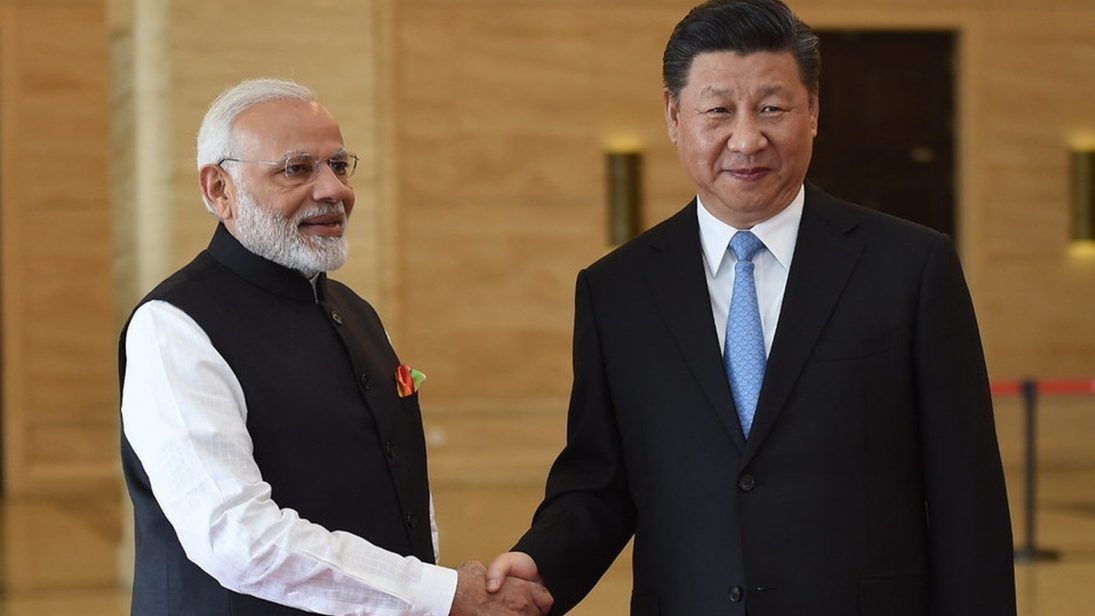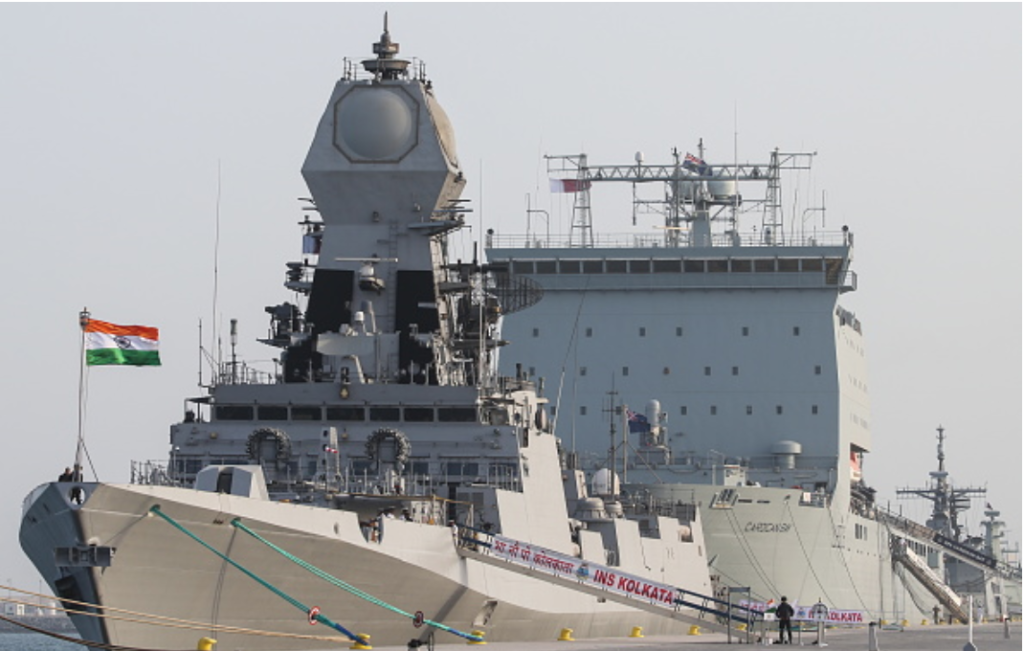
As the concept of the Indo-Pacific region (IOR) begins to gain traction in the United States and elsewhere, China and India are being increasingly juxtaposed against one another as opposing forces in the region. At a speed that outpaces New Delhi, Beijing has increased its maritime presence in the IOR in a big way. In doing so, it has crafted a narrative of itself as both a military force and a leader that can mobilize resources and extend support to smaller IOR countries.
Though the Indian Navy is often perceived as lagging behind the People’s Liberation Army Navy (PLAN), India can counteract the prevalence of Beijing’s narrative. While India’s recent assertion that its naval forces “can match what forces China can bring to bear in the IOR” might hold true, it is the battle of perceptions regarding India and China’s respective capabilities in the region that will ultimately determine who prevails. Eventually, the country that is best capable of preparing for war during peacetime while working with external resident powers and delivering on its economic promises to smaller IOR countries will come out ahead in this contest of narratives.
Chinese Presence in the IOR
In recent years, China has sought to increase its presence and extend its reach in the IOR. The under-emphasized reasons behind this expansion include Chinese interest in improving its navy’s expeditionary capabilities, protecting its overseas interests, and securing international routes vital to its trade and energy imports. China began patrolling in the western Indian Ocean in 2008, especially near the Horn of Africa. Its first counterpiracy missions were conducted in 2009 in the Gulf of Aden and since then have grown in scope and sophistication. Besides this, the PLAN holds regular combat training in the Philippine Sea, participates in multinational exercises, works on its intelligence collection and domain awareness, and consistently deploys ships in the western Pacific and the Indian Ocean, aside from its submarines in the IOR. In August 2018 alone, 14 PLAN ships were spotted by the Indian Navy in the Indian Ocean. Beijing has also deployed eight submarines in the Indian Ocean until October this year and developed a network of bases in the region. These activities have caused apprehension in New Delhi due to gathering potential for PLAN to increase its tactical effectiveness and stealth capabilities in the IOR.
These activities have shaped perceptions within India and the region of Beijing as the foremost regional military power in the IOR. There is also broad recognition that what China might achieve in the future will be even more critical than what it has already accomplished. There is a growing anxiety among the powers of the Indo-Pacific that future Chinese far-sea operations could see an extension of combat support to these missions. China launched its first aircraft carrier, Liaoning, in 2012 and is expecting to induct its second carrier in active duty by 2020. It has also announced the construction of its third and most advanced aircraft carrier. Finally, China’s emphasis on multi-mission ships capable of sustaining far seas operations, naval bases across the littorals of the IOR, and plans for dual-use bases in the Indo-Pacific have further fueled such apprehensions.
Great Power Narratives in the Indo-Pacific
India has taken some steps to counter the narrative of China’s growing presence in its regional waters. Through a new mission-based deployment plan to ensure the deployment of mission-ready ships and aircraft along critical sea lanes of communications in the IOR, 50 ships are to be deployed on a rotational basis to cover India’s Area of Responsibility (AOR) spanning the Persian Gulf, the eastern coast of Africa, the northern Bay of Bengal, and the southern Indian Ocean up to the Malacca Straits.
Despite these steps, regional perceptions of India and China’s power in the IOR continue to be shaped by what China has done and India hasn’t. These evaluations rest on a three-pronged assessment of three factors: (1) each country’s ability to extend war and peacetime capabilities to the IOR; (2) each country’s capacity to sustain its presence and carry out effective monitoring for extended periods through the regional expanse; and (3) the speed of each country’s production of sophisticated technology and weapons systems to support future defense needs. Regarding the first two factors, the Indian Navy may have an edge as it enjoys home-water advantage over the PLAN. In maritime assessments, strong regional powers could often prove overwhelming for even powerful external navies in that region. Thus, the Chinese Navy’s extended capabilities might not be enough to subdue India’s regionally robust forces.
Though India may be holding perceptive advantage in the first two, it certainly lags China in terms of capabilities. For instance, India lags behind China with respect to surface combatant warships as well submarine forces. India has sought to lessen its deficit with China with its recent naval beef up. India has approved the construction of another 56 warships and six submarines as part of a 10-year plan and is expecting to have 200 ships and 500 aircraft by 2050. Recently, India’s first domestically built nuclear-powered missile submarine, INS Arihant, completed its first deterrence patrol.

Winning the Battle of Perceptions
While a maritime war between China and India could be a future possibility, both countries are not solely engaged in winning a balance of power game in the IOR, but also in tilting the region’s balance of perceptions in their favor.
In any battle over influence, perceptions of each country’s capabilities are crucial, as balance of influence involves military, economic, institutional, and ideational dimensions of power (as opposed to the reductionist view of power in the conventional balance of power theory). The outcome of this narrative-building contest will hinge on India and China’s capabilities in a variety of domains—a combination of which country better commands international waters, builds outposts in small but strategic nations, strengthens their surface and sub-surface presence, increases domain awareness and reconnaissance, provides high availability disaster recovery (HA/DR), collaborates with external resident powers, and delivers on promises of economic collaboration across the IOR.
With “balance of influence” trumping “balance of power” as the defining contest taking place in the IOR, soft power will be just as important as hard power. For this reason, whichever country is better able to work with the external resident powers of the Indian Ocean in forming a robust multilateral framework and grand maritime strategy will likely prevail in the battle of perceptions.
Importantly, India’s influence has been marred by its image as a hegemonic and overbearing country across the region. In contrast, with China aggressively forging partnerships with countries across the IOR with its Belt and Road Initiative (BRI) in recent years, many governments in the region perceive Beijing favorably as a partner in their economic development trajectories. However, as countries have increasingly begun to contemplate curbing the limits of Chinese intrusiveness due to the “debt trap” problem, India has an opportunity to create an alternative discourse as a country that is better predisposed to deliver on regional expectations of economic assistance and security than China.
With this in mind, India should play up its hard and soft power-based capabilities in the IOR more effectively than it has done in the past. With its regular Malabar naval exercises, Quad membership, and logistics agreements with France, the United States, and Singapore, it is undeniable that New Delhi is well-positioned to do so.
Image 1: MEAphotogallery via Flickr (cropped)


